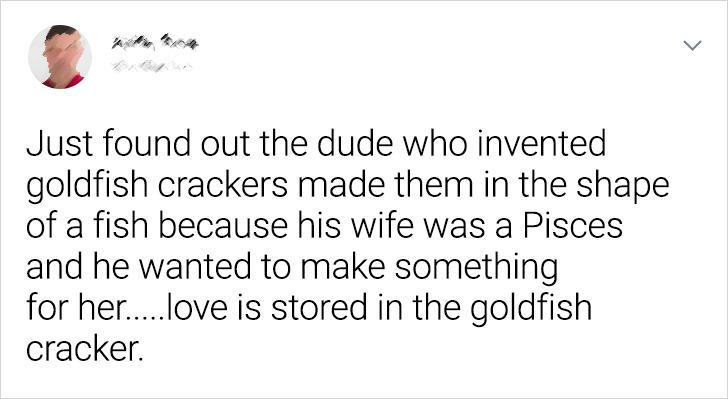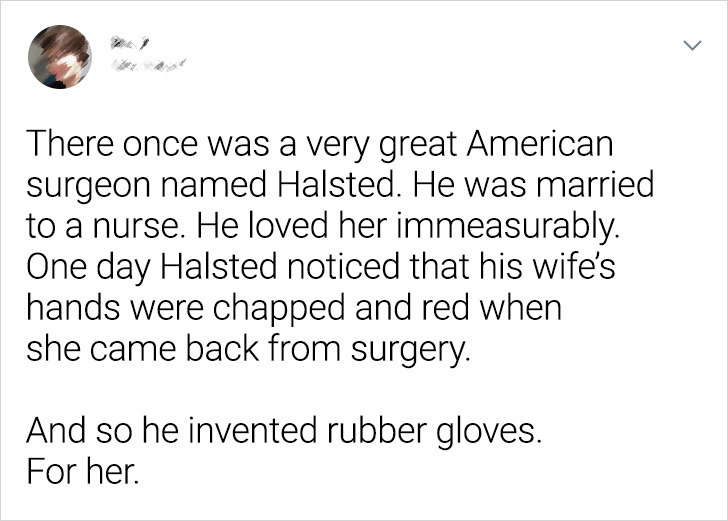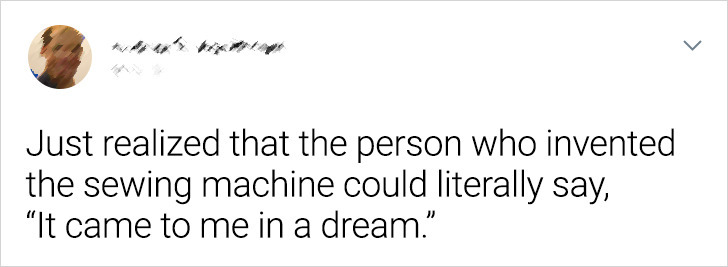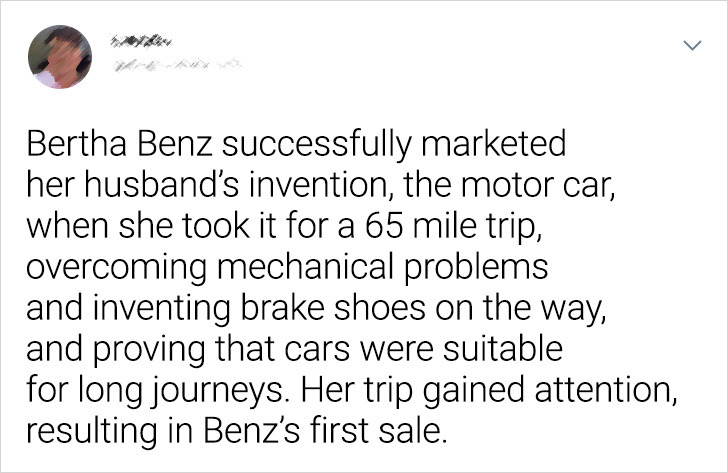bASZDAAA
14 Stories That Seem Too Creative to Be Real but They’re True

Our adaptable creative capacity makes us humans quite extraordinary. Whether it’s figuring out how to make dinner using only leftovers or fashioning a Halloween costume from grandma’s closet, we got it. And, when it comes to caring for our loved ones, many of us excel in it.
Today at Bright Side, we bring you stories that show how a hint of ingenuity, a bit of resourcefulness, and some tenderness can make a big difference for a lot of people.
1.
This is true! The known salted Goldfish Crackers were created by Oscar J. Kambly, a Swiss baker. He created them as a birthday present for his wife and long-time love, whose astrological sign was Pisces. The snack, originally called “Goldfischli,” soon grabbed the attention of Pepperidge Farm’s Margaret Rudkin. She acquired the license for the cracker’s trademark rights, the shape, and the recipe.
2.
Sam Farber had the idea during a vacation, when he saw his wife Betsy, who suffered from arthritis, struggling with kitchen tools that had metal handles. He made a few models and decided to take it another step further, working with the design firm Smart Design to develop OXO Good Grips for anyone with any type of need.
3.
Canola oil is a vegetable oil made from rapeseed, a seed from the mustard family (the original Latin word “rapum” just means turnip). To make the oil safer and healthier, Canadian scientists created a variation of it, and renamed it canola. Some say the name came from Canada (“can”) + oil (“o”) + low (“l”) acid (“a”), others that it is just Canada + oil (“can” + “ola”).
4.
Dr. William Halstead’s assistant, Caroline Hampton, had dermatitis in her hands from working with hospital disinfectants. Because she could not continue to work like that, she went to him and gave her resignation. But he did not want her to resign.
So he got her a pair of gloves to use during procedures, and her dermatitis eventually disappeared. She went on as his assistant, and they ended up marrying.
5.
The T-shirt evolved out of the long johns that men wore in the 19th century. And in 1904 a clothing company decided to market the product with the slogan “No safety pins — no buttons — no needle — no thread,” clearly aiming for bachelors with no sewing skills. And it worked! Soon enough, thousands of men chose the comfort of the cotton pullover, making it wildly popular.
6.
Half right. The first known college in the world is recognized as being the University of Al Qarawiynn, founded in 895 CE in Morocco. It was actually founded by a woman named Fatima al-Fihri. Both her and her sister were very well-educated. However, it is true that before it was created, no one could have attended it.
7.
He probably could, and it dates back to the 18th century. Thomas Saint, the inventor, patented it as: “An Entire New Method of Making and Completing Shoes, Boots, Spatterdashes, Clogs, and Other Articles, by Means of Tools and Machines also Invented by Me for that Purpose, and of Certain Compositions of the Nature of Japan or Varnish, which will be very advantageous in many useful Appliances.”
8.
He did it! Alfredo di Lelio invented Alfredo sauce for his wife, Ines, who was too nauseous to hold down other foods. Di Lelio opened his namesake restaurant, Alfredo, in Rome in 1914 and added the dish to the menu, serving it to Hollywood actors Douglas Fairbanks and Mary Pickford on their honeymoon.
9.
Josh Wardle, is a Welsh-born software engineer living in New York. He created Wordle trying to make a game he and his girlfriend Palak Shah could play together, as she was bored during lockdown. He was overwhelmed by the game’s success and sold it to The New York Times for an undisclosed 7-figure sum.
10.
Earl Richardson enjoyed working, and experimenting, with electricity. To the point where he actually left his job as a meter reader in order to electrify common household appliances. Among other inventions that we still use today in some way, in 1911, he invented the first heating pad. And yes, he really did call it the “El Warmo.”
11.
Joseph Pilates was a frail child, that suffered from diverse ailments. His determination led him to work as a circus performer, boxer, and self-defense instructor. He also developed diverse rehabilitation apparatuses. Pilates and his wife Clara emigrated to the USA, where they developed the Pilates method in their “body-conditioning gym,” using many of those apparatuses, and became very popular.
12.
Some think knock-knock jokes originated in the Middle Ages, as a result of “call and answer” castle guards’ routines after dark. But the oldest written example can be found in Macbeth. It depicts a porter inviting 3 imaginary guests into his own personal hell, while delivering a humorous speech that follows the pattern of this modern joke.
13.
Bertha, born in 1849, had been interested in technical matters from an early age. She invested her entire dowry in the Benz company even before her marriage. In 1886, when Carl Benz finally patented the Motor Car, no one was interested in buying it.
So she decided to go on a long-distance journey. Not unsuitable roads, nor a lack of fuel, nor clogged valves were able to stop her. And her plan succeeded when, afterward, people started to ask for a test drive.
14.
The Murphy Bed was invented around 1900 by William Lawrence Murphy. He was falling for a young opera singer, but only had a one-room apartment. And the courting customs at that time would not permit a lady to enter a gentleman’s bedroom. So this invention allowed him to hide his bed in his closet, transforming the area into a simple room.
Had you heard any of these? Which one surprised you the most? Have you ever invented something to help someone you care for?
Comments
Related Reads
10+ People Who Wanted to Be on a Winning Streak in a Situation but Failed Drastically

20+ People Who Proved That DIY Home Renovations Aren’t a Tragedy

17 Texts Sent by Couples That Could Be a Unique Genre of Literature
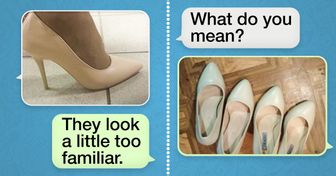
10 Stories Proving You Don’t Need a Superhero When There’s Dad by Your Side

15+ People That Can Easily Say, “The Apple Really Never Falls Far From the Tree”

18 Relatable Tweets About Everyday Life That Made Us Say “Same”

10 True Stories That Prove Kindness Is Quiet — but Stands Strong
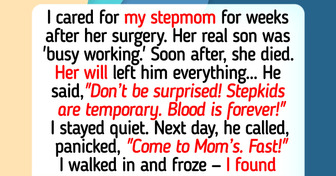
I Got Fired the Day Before My Vacation—And HR’s Policy Was Their Biggest Mistake

I Refuse to Walk My Daughter Down the Aisle With the Man Who Ruined Our Family

My SIL Demanded Proof My Daughter Was Mine—My Reply Ended the Family Dinner

13 Stories Proving That Female Solidarity Turns Ordinary Women Into Legends

12 Unseen Sacrifices Moms Make to Put Their Kids First

